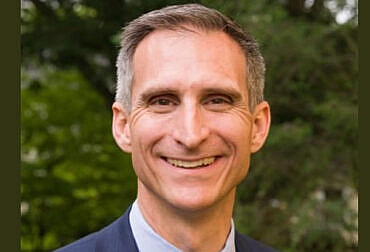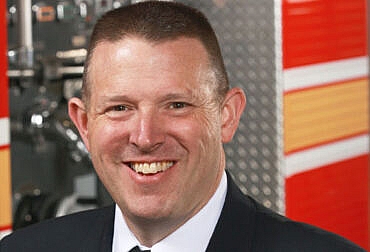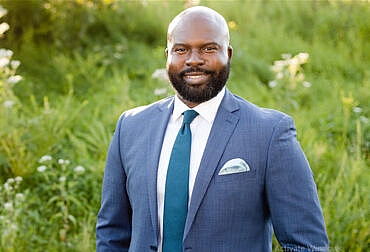Nagender Madavaram is the editor of the BetterMoCo.com portal. He discussed with Gabe Albornoz Councilmember At-Large and the Council Vice President about his vision, agenda and issues facing the County. The portal plans to interview all the councilmembers over the coming weeks. This is the first of a 2-part transcript of the interview
Nagender Madavaram: Good morning, Gabe. Let us discuss housing problems in the county. The percentage of renters in Montgomery County (MoCo) is increasing every year. It was 31% in 2009 and 35.22% in 2019. The current policies of MoCo are not helping the renters to become homeowners. Most of the employees in essential sectors are either living in other counties or other states. The main concern is the unaffordability of housing for police officers, firefighters, teachers and health care workers in MoCo. What do you suggest can be done to change the trend?
Gabe Albornoz: Well, first, thank you for that question and you’re absolutely right. Housing is such a foundational issue and challenge, not just in our community but across this country. I learned overtime that portable housing means different things to different people depending on what position they’re in economically, their perspective or where they are in life. This has been a very high priority, not just in this County Council but for previous county councils and county executives as well. It’s a supply and demand issue. There is much more demand than there is supply of housing and affordable housing available. We have to tackle this on multiple fronts; There is no silver bullet because there isn’t a sufficient amount of land available to meet the needs of everyone here in our community and those who want to come to our region. Before getting into some of the potential options, it is good news that there are people that continue to want to live in Montgomery County. One of the reasons for that is because collectively, the District of Columbia, Maryland and Virginia have one of the fastest growing economies in the entire nation. We need to start thinking about holistic regional solutions more so than we have before because Montgomery County is not going to be able to do this by itself, and neither will any of the other local jurisdictions. There are three things that I think we can and should do. The first is we need more housing, and so we need to provide more reasonable incentives for developers to be able to build housing that includes affordable options. There have been previous policies that have been established to make sure that a percentage of housing is set aside for residents that is more affordable than others. We also do need to look at some of the zoning that happens within neighborhoods and be creative within reason and in how we identify zoning options within communities. We don’t want to do this too aggressively and too quickly because that could create another set of issues. That’s another opportunity from a policy perspective and I think that will make a difference. The other is we need to be creative with the land that the county owns, for example through Montgomery College and also Montgomery County itself. Our faith-based institutions and organizations have a fair amount of land available to them, and so how do we provide incentives and how do we think creatively and maximizing the precious land that we have to create more options. You know can we do more housing complexes on top of recreation centers, on top of libraries and on top of some of the existing county facilities that we have. We’re exploring this right now. You’re right that we absolutely need to figure this out in order to have a robust economy and a robust community. We need our frontline service workers to be able to afford to live here and that of course, includes our first responders, our teachers and social workers. Those are critically important positions and we have to make sure that things are affordable for them. I’m actually working right now on introducing legislation later this fall that would provide a housing tax credit for our first responders because we’re having a huge issue with recruitment and retention right now and it’s in the county and community’s best interest to make sure that we have first responders that reside here. It is a very complicated challenge but a very important one that will have to be a continued focus of our county.
Nagender Madavaram: What are you expecting from the developers in providing affordable housing to low-income groups?
Gabe Albornoz: Well, I think we have to provide incentives through legislation in order to ensure that they are setting aside different housing options. We also should not lose sight that the development of more housing options at all levels will help our entire system. Right now, if you’re a young professional who wants to live in Montgomery County there are very few options for you. When we have a younger generation of workforce in our county it will make us more attractive to employers. Becoming more attractive to employers will help generate additional revenue that we will be able to utilize to invest in other areas such as social services or further enhancement of economic development. It’s all inter-connected and in addition to focusing on ensuring the affordability of housing options, we need to focus on providing more housing options, which will help to rise all boats.
Nagender Madavaram: Do you have any out of box solutions to increase the number of houses for low-income groups?
Gabe Albornoz: We are working on the housing tax credit of up to $2500 because that’s what the state mandates. We are having a huge issue in recruiting first responders at all levels, not just law enforcement, but Fire and Rescue as well as our 911 call center takers. These are vital positions. I know that the issue of police reform is a complicated one. I know we’re going to get to that too in this interview. It’s in the community’s best interest for us to have first responders that reside in the communities that they are charged with serving. The tax credit will help, it won’t be an end all be all, but it will help with recruitment and retention. Those are the kinds of solutions helping specific groups. The partnerships and alliances to build more housing complexes on top of government buildings is another worthwhile endeavor as well.
Nagender Madavaram: Earlier Karen Britto, Nancy Navarro and Valerie Ervin formed a group and organized events to encourage ethnic groups to participate in politics and achieve racial justice. They got resistance from the establishment. What activities are you doing for more racial equality?
Gabe Albornoz: It’s a very good question and a very good point. You mentioned Valerie Ervin, Karen Britto and Nancy Navarro. Three close friends who I admired tremendously for their leadership for many years here in our community. I’ll add one element to that note: Catherine Navarro created a civic engagement project several years ago for primarily immigrant residents here in the county to learn about how the county works from a civic engagement, not necessarily a political construct, but more of a civic engagement construct and it is proven to be immensely successful. It is interesting that, this last year, during the pandemic, we had a record number of people testify before the County Council and a record number of people seeking interpretations to testify before the County Council. I think you can draw a straight line from what we have seen and the efforts of Nancy and others to make sure we get more people engaged. So, in addition to defining programs that reach out to constituents through boards, commissions, departments, agencies and the political construct you mentioned earlier, I think that we also need to make sure that every interaction that we have with the community is a positive one. You never know when you’re going to meet somebody who has never met a government official and doesn’t know whom to talk to. We have to breakthrough that and make sure that every experience is as positive as it can be which means training for our staff so that it’s culturally appropriate, and also that the workforce that we have reflects the diversity of the communities they’re serving. If we can do those things together, we’re going to make a bigger difference.
Integration of ethnic groups
Nagender Madavaram: MoCo is a minority-majority county. It is enriched with a diversified population. A considerable number of new immigrants do not know the role a county plays in their lives. How can you encourage them to participate in the government process?
Gabe Albornoz: Prior to the pandemic, I was putting a lot of miles on my car trying to go to as many community meetings as I could, and now I’ve continued meetings through Zoom. I try to connect to connectors, connect to leaders in the community that have some sphere of influence so that we can establish strong relationships. I’ve also been working with immigrant serving organizations and also faith-based organizations that really serve our immigrant communities because those are places of trust. If we can establish relationships with those organizations, then we’re in a better position to make connections to our immigrant community. As the son of immigrants, this is something that’s very near and dear to my heart and something that I take very seriously. I’m very passionate about it. I think we have to plant seeds and build bridges for future generations to feel like this county is theirs too and that they have a voice. They should feel that they are being listened to and that they are respected.
Education:
Nagender Madavaram: In MCPS, high schools have two systems. Honor programs are meant for top students and general programs are designed for on-level students. The school administrations pay more attention on honor program students and not as much on on-level students. Most Hispanic and Black students are enrolled in general programs. There should be a bridge program to bring on-level students into the classrooms of honor programs. How do you address this problem though it is a subject for Board of Education?
Gabe Albornoz: I agree very much with the premise of the question. You’re right that the system currently is not as tight and it is not as inclusive as it should be. I think my colleagues in the Board of Education oversee the curriculum development in partnership with the leadership at MCPS. The County Council has influence and we need to make sure that we reasonably and appropriately use that influence. We make sure that we’re preparing students for the 21st century economy. We’re preparing them socially and emotionally for the challenges that lie ahead on so many issues such as climate change and other challenges. There are very strong professional development programs that lead to very robust careers that are well compensated, well paid and that put students on a career track. If they are interested in exploring from an entrepreneurial perspective, different options should be available for them. We can’t have a one size fits all approach. It’s much easier said than done, and I know there are passionate feelings on all sides on this issue and I don’t profess to know all the answers, but I do believe and have faith in the leadership at MCPS as well as my colleagues and friends in the Board of Education. One thing that Montgomery County has never lacked is community engagement and this is a blessing. Our parents are very active and that is so good and so healthy for our system.
Police
Nagender Madavaram: What is your view about the idea of de-funding of the police?
Gabe Albornoz: It is a deeply emotional and complicated issue and it goes back generations. I have learned so much just in these last three years about the history of law enforcement in this county. I have better understood and have had very meaningful and authentic conversations with residents who don’t feel that our law enforcement is phrasing out policies in a way that is fair or equitable. The stigma and the emotion that people who have had negative experiences is deep and its profound. I’ve also spoken to many police officers, first responders and have had the opportunity, especially over these last 12 years to get to know on a personal basis many of our cops and the leadership within law enforcement. I think by and large, we have highly dedicated, highly trained, very committed law enforcement professionals in Montgomery County. That doesn’t mean that we can’t adjust to meet this moment in time in a way that’s reasonable. When you look at the facts, Montgomery County Police Department as compared to the national average of police officers per the percentage of residents that reside in our community, we already have a relatively small force. The force is organically shrinking. In the last cadet class, there were only 14 new cadets and less than 100 applications. We were averaging over 400 applications and when I first started in county government 12 years ago there were over 1000 applications for these positions. The pool of people even just applying is shrinking. The number of people retiring and leaving the profession or leaving Montgomery County to go work someplace else is increasing. This is not as simple as a catch phrase and it is unfair on many levels to just label it something that simple. We need to invest in social services, which we are doing. We need to ensure that we have enough resources, and we have trained and supported officers in every way so that they can do their jobs and help ensure safe and equitable practices so that everyone has the same experience when they come across a law enforcement official so that they don’t have to second guess or question whether or not they’re going to be treated equally. We obviously have a lot of work to do, but I have confidence that we’re going to be able to work this through. We also need to have more authentic conversations on this subject. There’s a lot of passion on all sides and I feel that it’s a part of my job, as an elected official, to help provide a bridge. I know this is hard but I’m doing my best to build that bridge.











